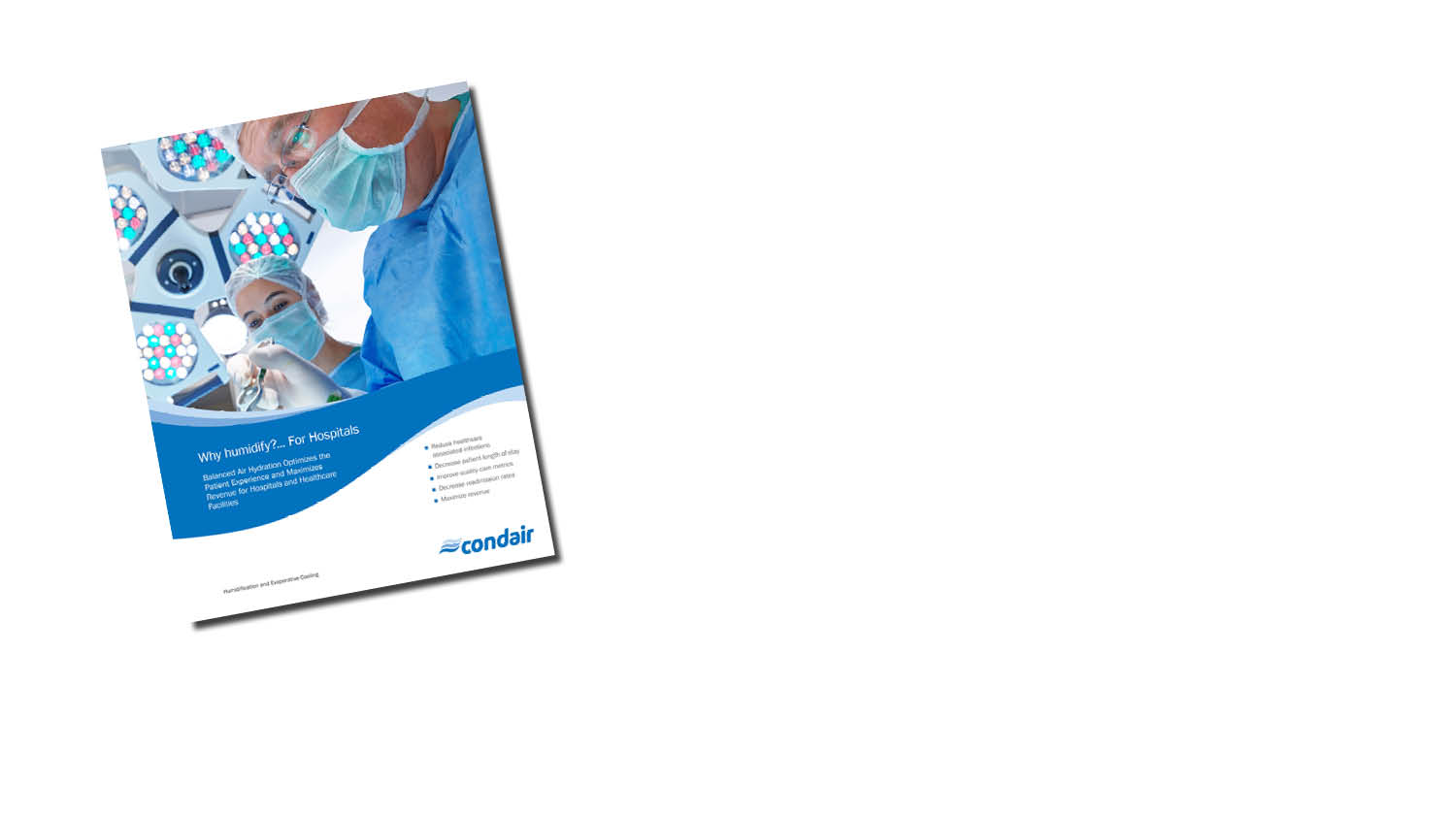-
Cardinal Health
-
CHUM Research Center
-
Cumberland Infirmary
-
Gila Medical Center
-
Humber River Regional Hospital
-
UCSF Mission Bay Hospital
-
Phelps Surgicenter


Why Humidify... For Hospitals and Patient Care
For hospitals and healthcare facilities it is essential to maintain a safe, clean and comfortable environment at all times in order to successfully treat patients and eliminate health risks for staff.
Overview
For the medical industry, the goal is to treat the injured or ill in a safe and comfortable environment. Hospital staff must also have a comfortable environment, so they are at their best in order to perform proper diagnosis and treatment. Hospitals also have various rooms with various purposes. They range from waiting rooms to intensive care units, x-ray facilities and surgery rooms. All of these types of rooms require a degree of air quality which includes specific requirements for humidity.
A comfortable, healthy atmosphere is necessary for rest and recovery. If a health care environment is too dry it will not only hinder a patient’s recovery but will also encourage infection and further illness. Deviations from the mid-range of relative humidity (RH) of 40-60% can reduce air quality by causing an increased growth of bacteria, airborne infection, sore eyes, sore throat, increased static and dust, and premature coagulation.
Airborne Infections
Dry air will attempt to pull moisture from all possible sources in a room including mucous membranes. Mucous membranes are our bodies natural defense against airborne infections. If our membranes dry out we are more prone to colds, flus, and viruses.
Dry Eyes and Sore Throat
Having dry eyes or a sore throat can be one of the first signs of exposure to dry air. These symptoms can make the working environment for staff uncomfortable and can be problematic for those that have that a weak immune system.
Dry Skin
When a room is dry, the air will draw moisture from the skin causing dry patches, itchiness, rashes and discomfort.
Maternity Wards
Humidity levels in maternity and obstetric wards are critical to babies as they are particularly sensitive to dry air. Low relative humidity can also affect babies with existing respiratory problems.
Premature Coagulation
Correct humidity levels are essential in operating theaters. Low RH levels can cause premature drying and formation of scabs from coagulated blood. This is also a concern in burn units.
Static and Dust
When humidity drops below 40% RH, the build-up of static electricity is increased. Static damages sensitive electronic equipment and will cause dust to rise into the atmosphere. By maintaining proper RH levels, static build-up is eliminated and dust is suppressed.
The Sterling Chart – optimum RH for health
The Sterling Chart below illustrates how RH affects health and well being. Colds, flu, sore throat, dry eyes, itchy and cracked skin are all symptoms that are usually prevalent in the cold dry months of the winter when the indoor RH is at its lowest. The increase in bacteria, viruses and ozone production (caused by static electricity) in low RH levels all have an adverse affect on health.

Benefits of humidification in hospitals include:
- Minimizes the risk of airborne infections.
- Decreases the occurrence of respiratory issues in newborns.
- Elevates patient and staff overall comfort and virus protection.
- Lowers employee absence rate
- Reduces premature drying and formation of scabs from coagulated blood
- Prevention of electrostatic damage to medical equipment




Why Humidify for... Life Sciences

Immune Systems

Home humidification

Why Humidify... For Retirement & Nursing Homes

Why Humidify... For Schools

Why Humidify... For Greenhouses

Why Humidify... For Museums

Why Humidify... For Data Centers




